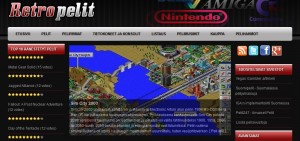Disc golf’s big yellow band: Love it or hate it?
After our DISCussion last week about the number of chains a disc golf basket should have, it didn’t take long to find a great follow up DISCussion. Thanks to a Facebook comment from one of our readers, and a few emails, we pose you this topic: The big yellow band found on the top of the Innova Discatcher… Do you love it or do you hate it? To be fair, Innova’s Discatcher isn’t the only disc golf target with the big band.
Latitude 64’s Pro Basket (and Dynamic Discs’ new practice basket) show a band, though it is smaller in height. Prodigy Disc’s recently released Professional Basket features a band in a different hue, but very similar size.
Other baskets such as the DGA Mach III, Mach V, or Mach X, opt to go without a big band and use a metal ring to help support the top chains. In the end we have two different styles: band or no band.
In nearly every tournament we’ve played at or attended as a spectator we’ve always heard a phrase along the lines of “I wish they had [insert basket of the opposite style]instead.” You can never make anyone happy.
The baskets with the band cause your eye to believe it has a smaller opening. Baskets without the band make you think there is no true ceiling to the top of the basket in a sense.
According to the PDGA technical standards, Championship level target approved by the PDGA must have a “target zone” of 51 centimeters (+/- 3 cm). We looked at the approved targets to see how the target zone on the most popular targets stand up:
- DGA Mach III: 51 cm
- DGA Mach V: 53 cm
- DGA Mach X: 49.5 cm
- Discraft Chainstar: 53 cm
- Innova Discatcher: 51 cm
- Prodigy Disc Professional Basket: 49 cm
Two or three centimeters isn’t much, but is a difference. There is a common misperception that Innova’s Discatcher has a smaller target zone than other baskets when in fact it right on the middle of the recommended size and on the bigger end when compared to others.
Two other benefits to the band, regardless of size and color, are visibility and the ability to actually stop a bad shot.
From wide open holes to tightly wooded lines, it is easy to spot the brightly colored band for your next shot. Others offer powder coated metal and chains to help stand out and tend to do a decent job, but in our opinion, the band is the way to go in terms of visibility.
Now, it is quite frustrating to release a putt a little high and have it hit the belt and drop to the ground, but the end result could have been worse. By hitting a flat object instead of a rounded one, the disc will lose a lot of energy quickly and see the flight come to an end. If you were to hit a nub or the top of another chain support and you’ll often get a nasty deflection and flight. Where the disc might land isn’t as predicable.
While it might seem as if we have a complete biased to baskets with the band, we’re more in the mindset that with or without the band, it’s the chains we’re aiming at. Bad bounces are part of the game.
One thing we don’t like about the band is the occasional damage it can cause your disc if you hit it at a bad angle. On drives, long putts, or heck, even short putts, if you hit the top part of the band at the wrong angle, it can take a chunk out of your disc. This is especially common in softer or more basic plastics.
We’ve had great shots and great putts on holes with a Discatcher and great shots and great putts on holes with a Mach V.
A strong mental game should help make the band become an afterthought and something you rarely focus on. Keep your eye on the heart of the chains and let the disc do they work.
What side of this DISCussion do you fall on? Do you like the big bands found on many disc golf targets? Would you rather have a basket with out? Regardless of your stance, why do you feel that way? Keep the DISCussion going!
The post Disc golf’s big yellow band: Love it or hate it? appeared first on All Things Disc Golf.



